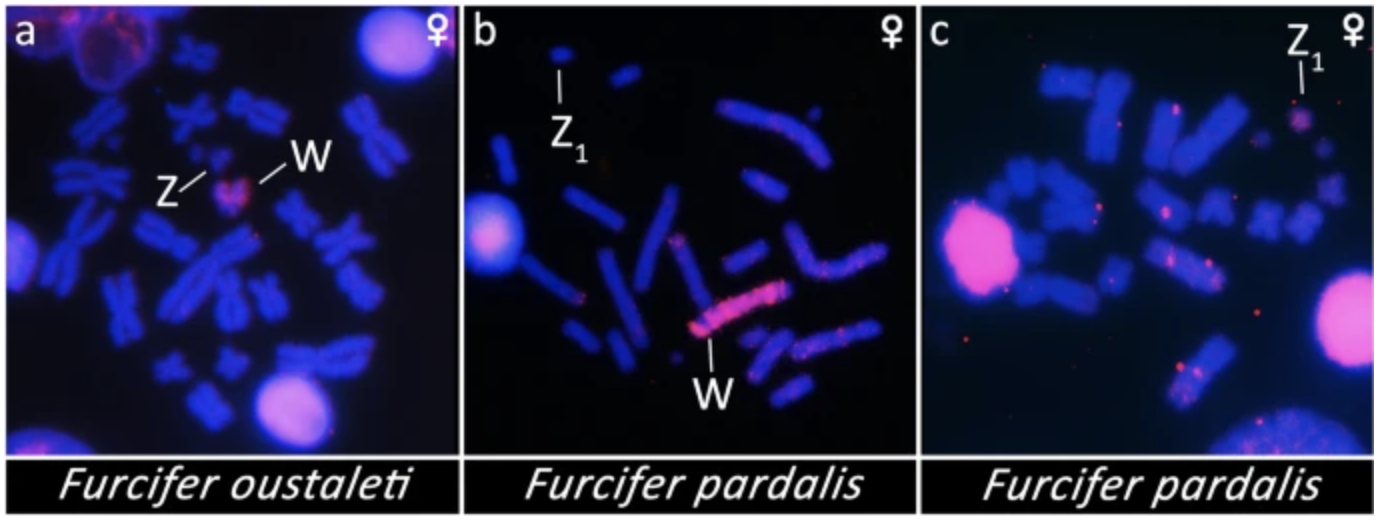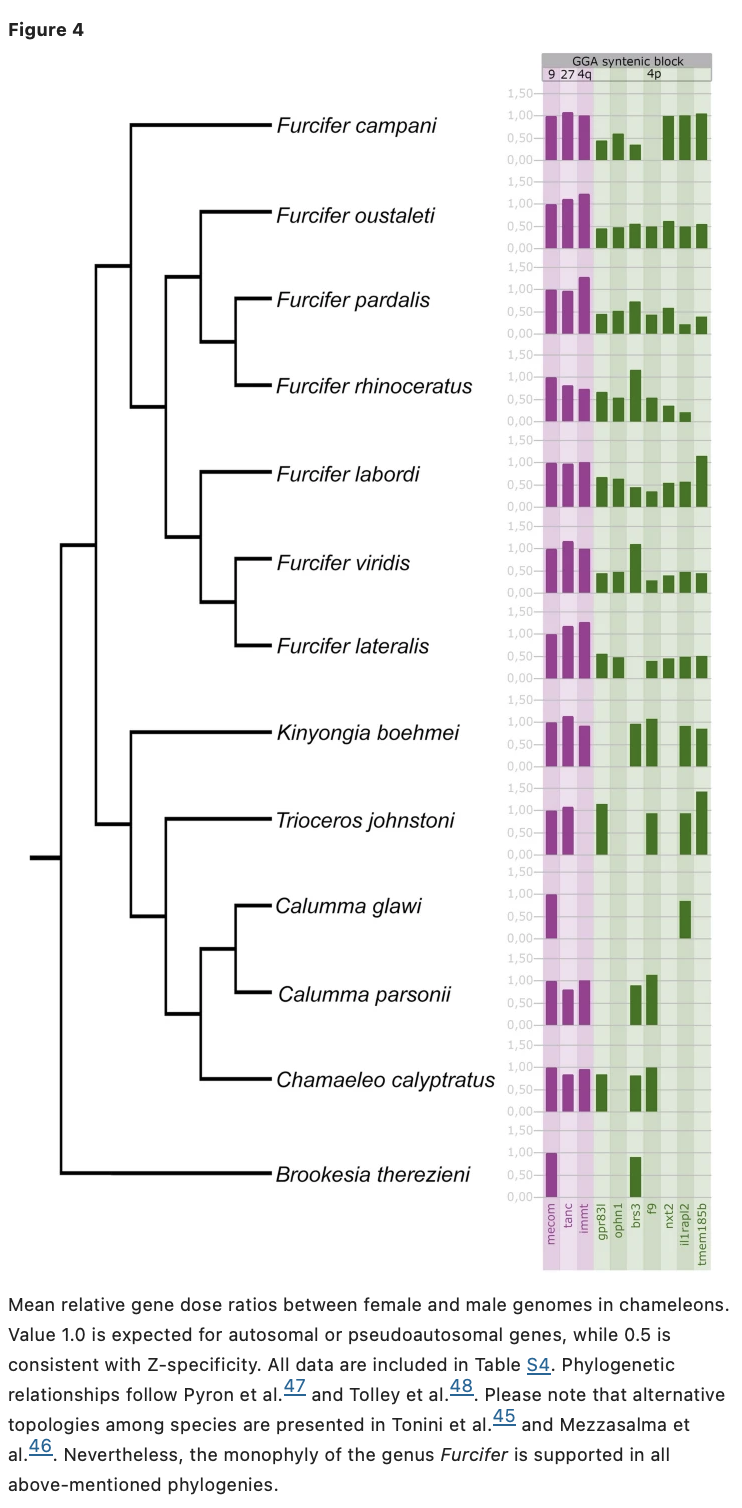Chameleon Sex Chromosomes: Ancient, Complex, and Surprisingly Gene-Rich


In a comprehensive genetic study, Rovatsos et al. (2024) investigated the sex chromosomes of Madagascan chameleons in the genus Furcifer, revealing unexpected complexity and evolutionary depth. Using DNA from 13 species—including Furcifer pardalis, F. lateralis, and F. oustaleti—the researchers analyzed Z and W chromosomes through microdissection, gene coverage, and qPCR.
They found that the Z1 chromosome in panther chameleons matches the Z chromosome across the genus, while Z2 represents a neo-sex chromosome. Surprisingly, the W chromosome—typically gene-poor in many species—retains substantial gene content in Furcifer, with 42 W-specific genes identified. In F. pardalis and F. lateralis, over 16,900 genes were mapped, and gene ratios between sexes (0.35 and 0.65) suggest a more balanced chromosomal contribution than expected.
The study also estimates that Furcifer sex chromosomes originated at least 20 million years ago, coinciding with the divergence of F. campani. These findings challenge assumptions about sex chromosome degeneration and highlight the evolutionary stability of ZZ/ZW systems in reptiles.
Citation:
Rovatsos, M., Mazzoleni, S., Augstenová, B., Altmanová, M., Velenský, P., Glaw, F., Sanchez, A., & Kratochvíl, L. (2024). Heteromorphic ZZ/ZW sex chromosomes sharing gene content with mammalian XX/XY are conserved in Madagascan chameleons of the genus Furcifer. Scientific Reports, 14, Article 4898. https://doi.org/10.1038/s41598-024-55431-9
